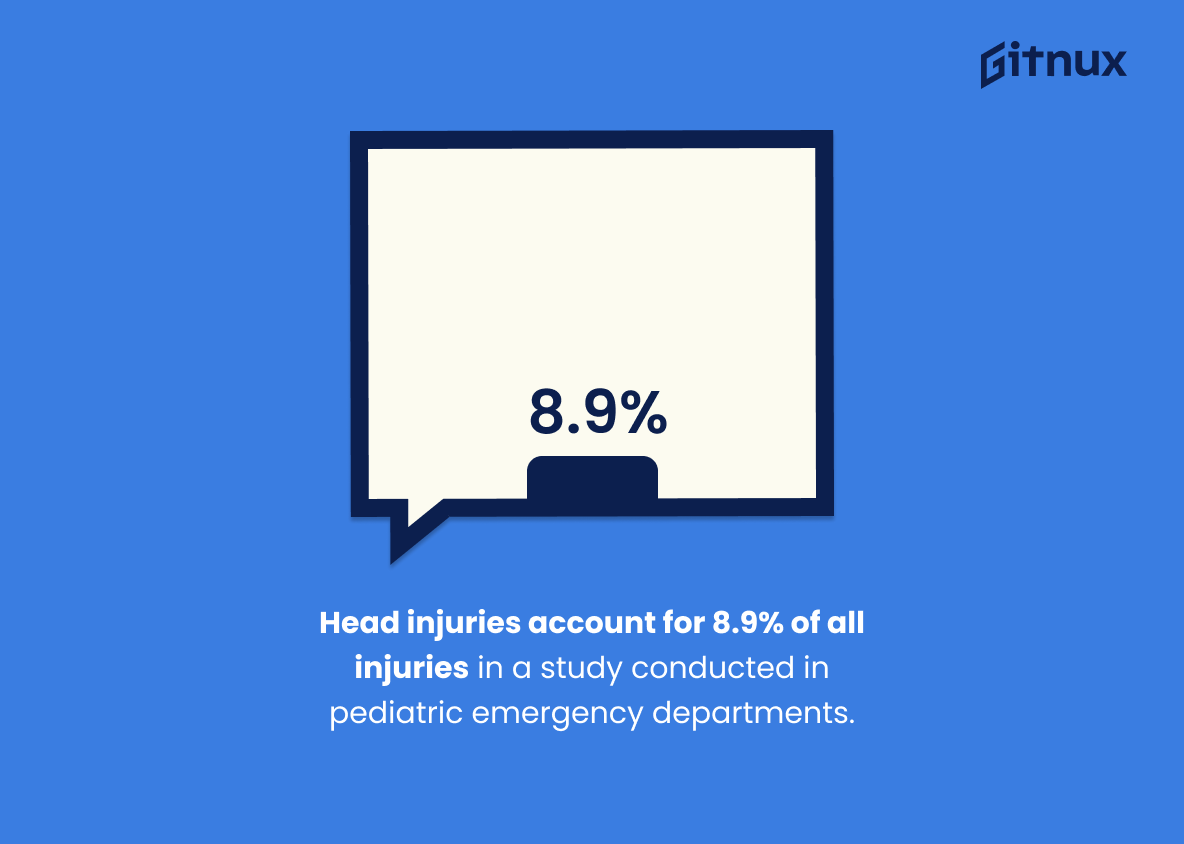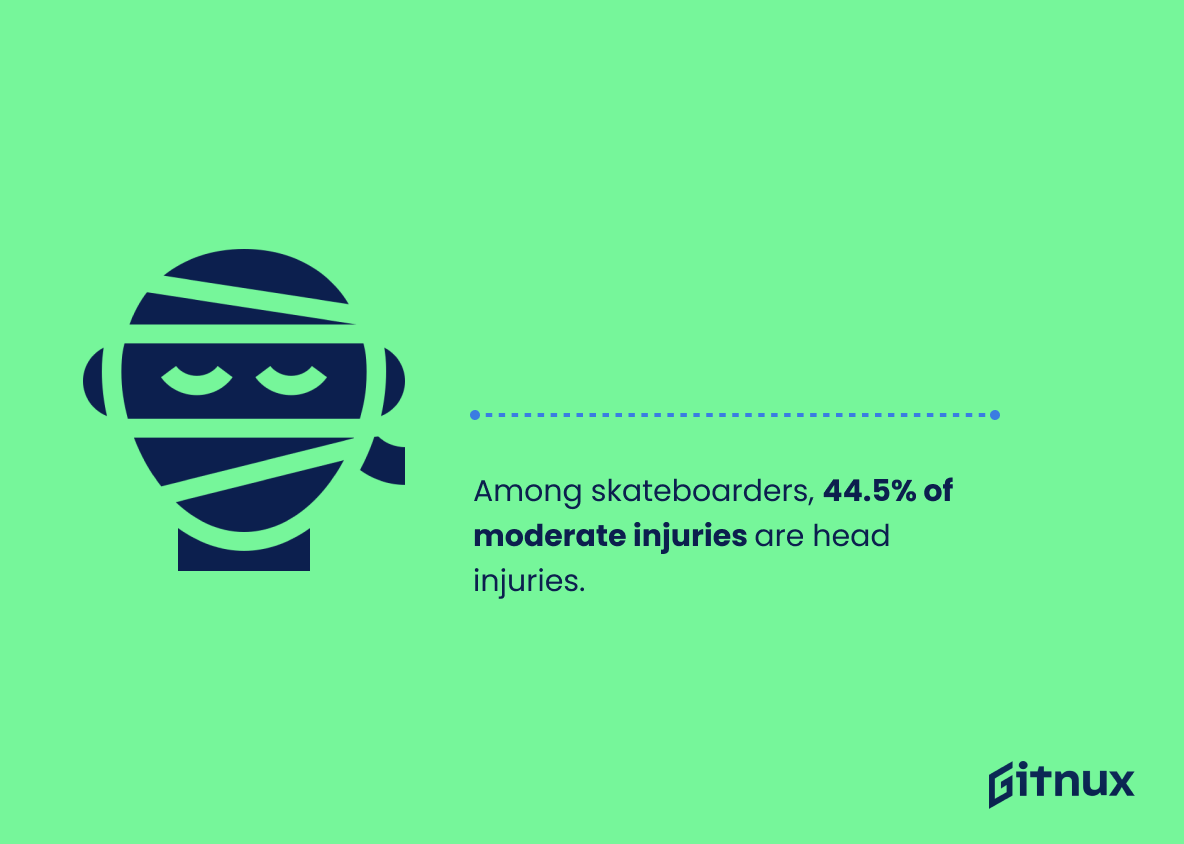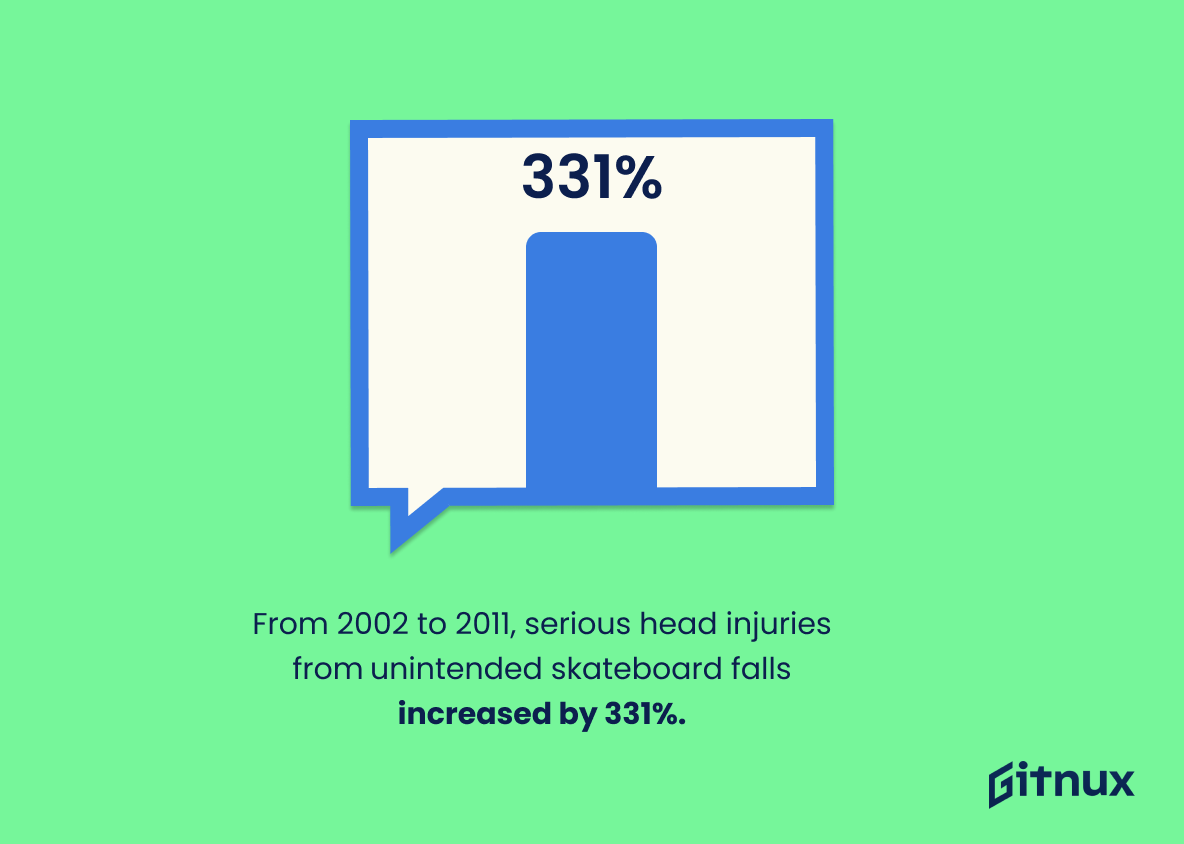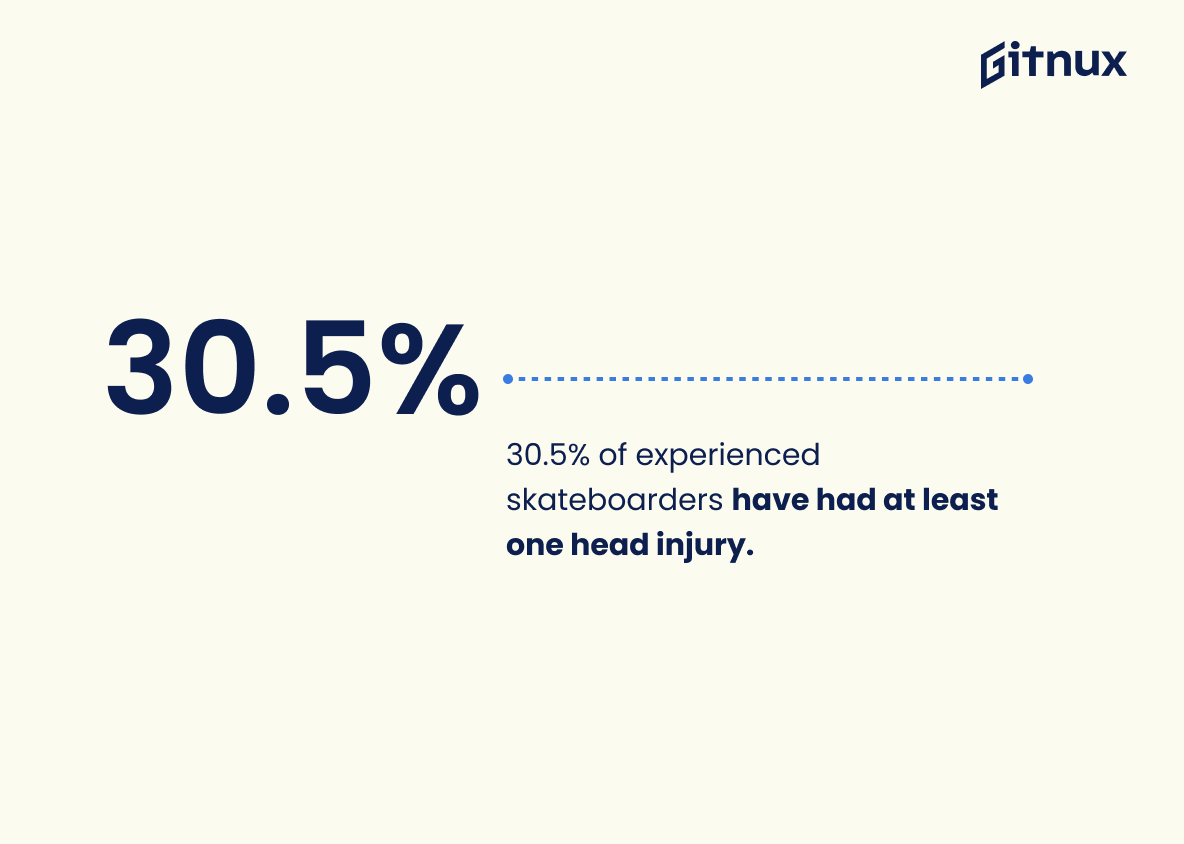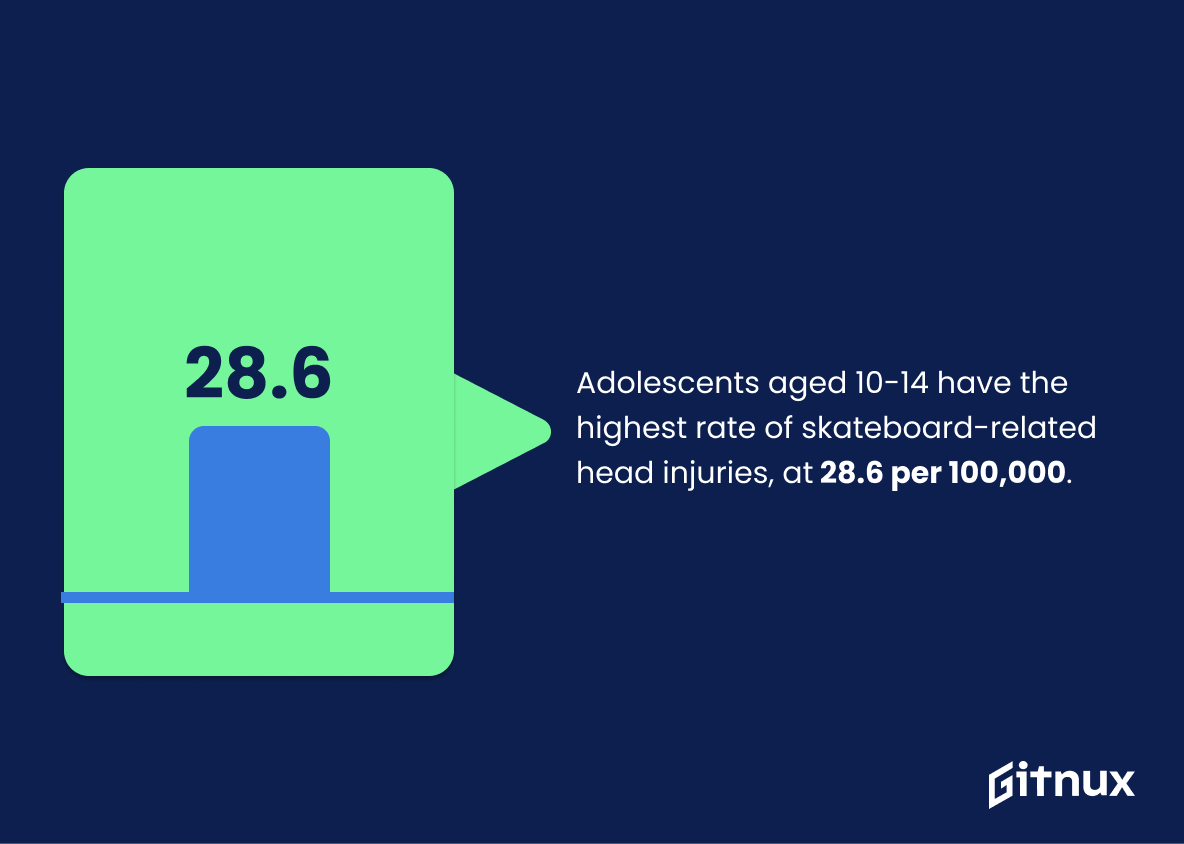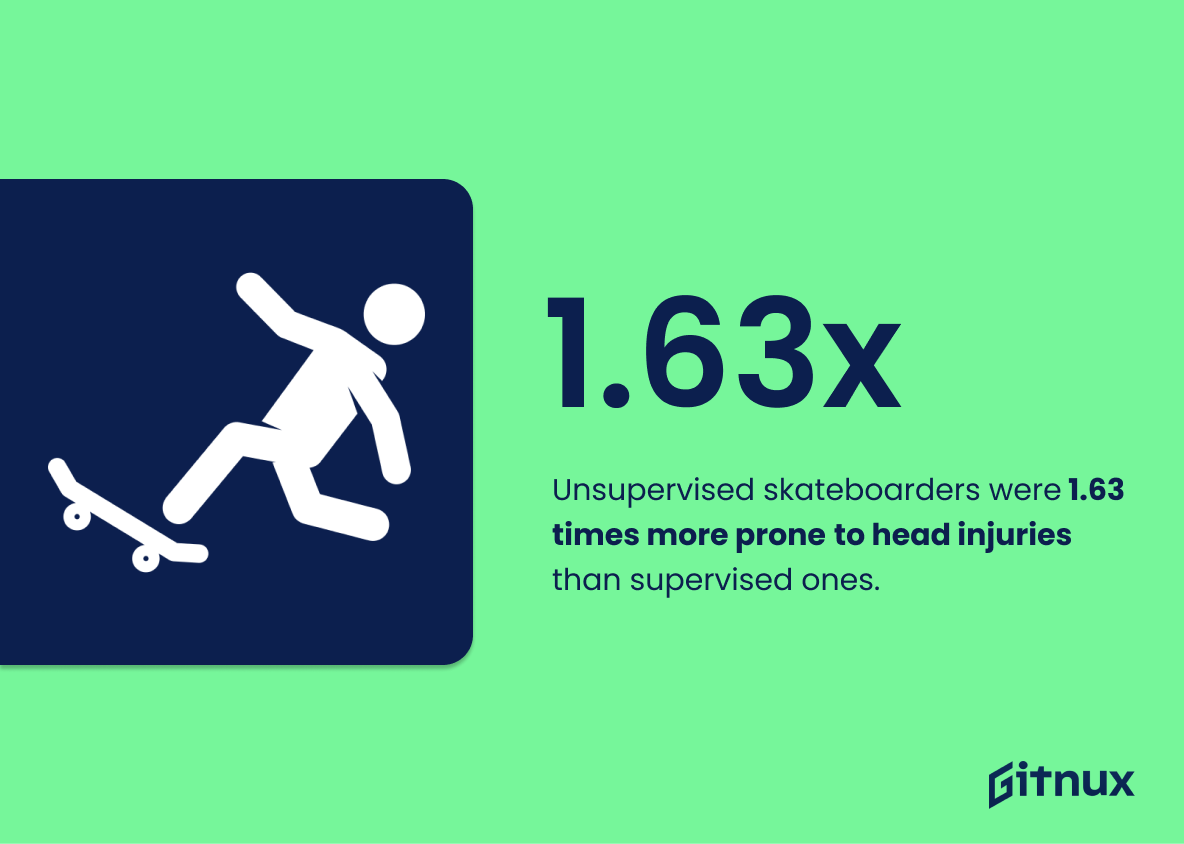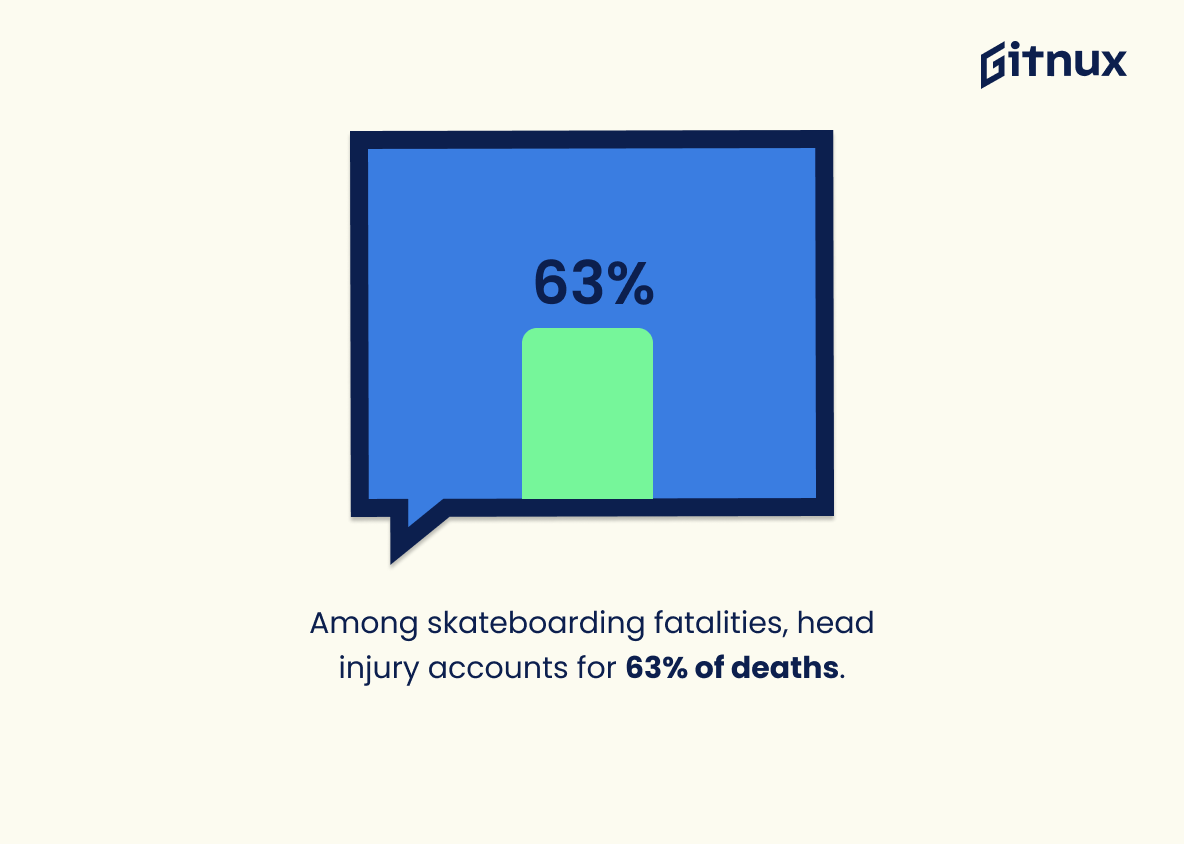Skateboarding is a popular activity among children and adolescents, but it can also be dangerous. Head injuries are one of the most common types of skateboard-related injuries, accounting for 3.1% to 44.5% of all skateboarding injuries depending on the study cited. In this blog post, we will explore 20 statistics about head injury in relation to skateboarding that demonstrate just how serious these risks can be and why safety measures such as helmet use should always be taken seriously when participating in this sport.
This statistic is a stark reminder of the potential danger of skateboarding, particularly for children. It highlights the importance of taking the necessary precautions to ensure that skateboarding is done safely and that head injuries are avoided. It also serves as a warning to parents and guardians to be aware of the risks associated with skateboarding and to take the necessary steps to protect their children.
Head and face injuries account for 28% of skateboard-related injuries.
This statistic is a stark reminder of the potential danger of skateboarding, highlighting the fact that head and face injuries are a major risk for skateboarders. It serves as a warning to those who are considering taking up the sport, and a reminder to those who already skateboard to take the necessary precautions to protect themselves.
Skateboarding Head Injury Statistics Overview
About 50% of skateboard injuries involve the wrists, hands, face, or head.
This statistic is a stark reminder of the potential risks associated with skateboarding. It highlights the importance of taking proper safety precautions when engaging in the activity, as a significant portion of skateboard injuries involve the most vulnerable parts of the body. It is a call to action for skateboarders to take the necessary steps to protect themselves and ensure that they are not putting themselves at risk of serious injury.
Head injuries account for 8.9% of all injuries in a study conducted in pediatric emergency departments.
This statistic is a stark reminder of the potential danger of skateboarding, as it highlights the prevalence of head injuries among those who partake in the activity. It serves as a warning to those who may be considering taking up skateboarding, and a reminder to those who already do to take the necessary precautions to protect themselves.
Among skateboarders, 44.5% of moderate injuries are head injuries.
This statistic is a stark reminder of the importance of wearing protective gear when skateboarding. It highlights the fact that head injuries are a major concern for skateboarders, and that taking the necessary precautions to protect oneself is essential. It also serves as a warning to parents and guardians of young skateboarders, emphasizing the need to ensure that their children are properly equipped with the right safety gear.
Skateboarders without helmets are 3.85 times more likely to suffer a head injury than those wearing helmets.
This statistic is a stark reminder of the importance of wearing a helmet when skateboarding. It clearly demonstrates that those who don’t wear helmets are at a much higher risk of suffering a head injury than those who do. This is an important message to get across to skateboarders, as it could potentially save lives.
Helmet use among skateboarders varies by age, with only 7.2% of those aged 17-19 years wearing helmets.
This statistic is a stark reminder of the importance of wearing a helmet while skateboarding, particularly for those aged 17-19 years. It highlights the need for greater awareness of the risks associated with skateboarding and the importance of taking the necessary safety precautions. It also serves as a warning to parents and guardians of young skateboarders to ensure that their children are wearing helmets when they are out skateboarding.
The incidence of head injury among hospitalized skateboarders is 3.6%.
This statistic is a stark reminder of the potential danger of skateboarding, as it highlights the fact that head injuries are a real risk for skateboarders. It serves as a warning to those who are considering taking up the sport, and a reminder to those who already skateboard to take the necessary precautions to protect themselves.
From 2002 to 2011, there has been a 331% increase in serious head injuries among skateboarders who fall from unintended ramps, jumps or flips.
This statistic is a stark reminder of the potential danger of skateboarding. It shows that, in the span of a decade, the number of serious head injuries among skateboarders who fall from unintended ramps, jumps or flips has skyrocketed. This is a clear indication that skateboarders need to be extra vigilant when it comes to safety, and that protective gear should be worn at all times.
30.5% of experienced skateboarders have had at least one head injury.
This statistic is a stark reminder of the potential risks associated with skateboarding. It highlights the importance of taking the necessary precautions to protect oneself from head injuries while skateboarding. It serves as a warning to those who are new to the sport, as well as a reminder to experienced skateboarders to remain vigilant and take the necessary safety measures.
Adolescents aged 10-14 have the highest rate of skateboard-related head injuries, at 28.6 per 100,000.
This statistic is a stark reminder of the dangers of skateboarding, particularly for younger riders. It highlights the need for parents and guardians to be aware of the risks associated with skateboarding and to ensure that their children are properly supervised and equipped with the necessary safety gear. It also serves as a warning to those aged 10-14 to take extra care when skateboarding and to be mindful of the potential for serious injury.
The rate of head injuries among skateboarders has doubled since the 1990s.
This statistic is a stark reminder of the dangers of skateboarding and the importance of taking safety precautions when engaging in the activity. It highlights the need for skateboarders to wear protective gear and to be aware of their surroundings in order to reduce the risk of head injuries. It also serves as a warning to parents and guardians to ensure that their children are properly supervised when skateboarding.
Skateboarders without supervision were 1.63 times more likely to sustain a head injury than supervised skateboarders.
This statistic is a stark reminder of the importance of supervision when skateboarding. It highlights the fact that without proper guidance, skateboarders are significantly more likely to suffer a head injury. This is a crucial piece of information for anyone considering taking up skateboarding, as it emphasizes the need for caution and the importance of having a responsible adult present.
Among skateboarding fatalities, head injury accounts for 63% of deaths.
This statistic is a stark reminder of the dangers of skateboarding and the importance of taking the necessary precautions to protect oneself. It highlights the fact that head injuries are the leading cause of skateboarding fatalities, and that it is essential to wear a helmet and other protective gear when skateboarding. This statistic is a call to action for skateboarders to take the necessary steps to ensure their safety.
The risk of sustaining a head injury while skateboarding is 0.4 per 100 hours of participation.
This statistic is a crucial piece of information when it comes to understanding the risks associated with skateboarding. It provides a clear indication of the likelihood of sustaining a head injury while skateboarding, allowing readers to make an informed decision about whether or not they should participate in the activity.
Conclusion
Skateboarding is a popular activity among children and adolescents, but it can also be dangerous. The statistics presented in this blog post demonstrate that head injuries are an all-too-common consequence of skateboarding, accounting for 3.1% to 44.5% of all skateboard injuries depending on the study cited. Head and face injuries account for 28%, while traumatic brain injury accounts for 4%. Adolescents aged 10-14 have the highest rate of skateboard related head injuries at 28.6 per 100,000 people annually; however, helmet use has been shown to reduce the risk by 85%. Unfortunately only 7.2% of those aged 17–19 years wear helmets when they go out skating which puts them at greater risk than their younger counterparts who may be more likely to follow safety guidelines due to parental supervision or other factors such as peer pressure from friends wearing helmets themselves.. It is clear that further research needs to be done into ways we can encourage safe practices amongst young skaters so that these numbers do not continue rising over time – especially since there has already been a 331% increase in serious head injuries between 2002 and 2011.
References
0. – https://www.pubmed.ncbi.nlm.nih.gov
1. – https://www.jstage.jst.go.jp
2. – https://www.medscape.com
3. – https://www.apha.confex.com
4. – https://www.aans.org
5. – https://www.sma.org.au
6. – https://www.ncbi.nlm.nih.gov

